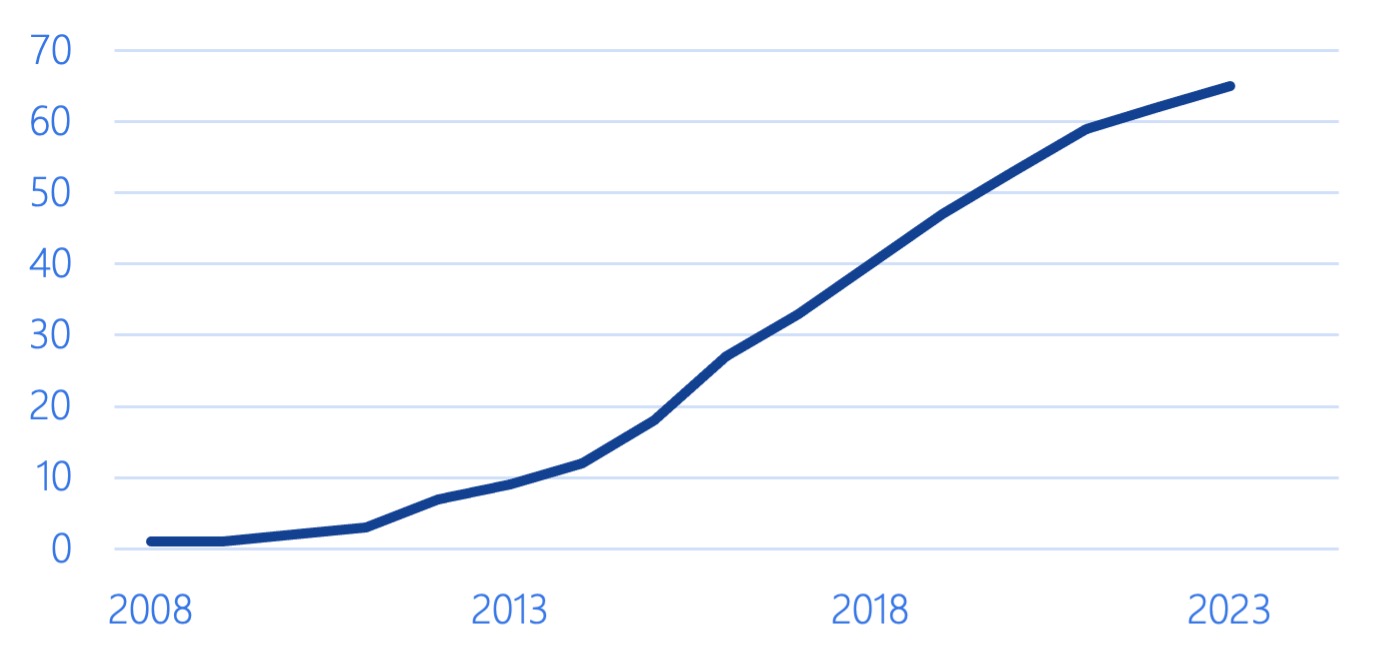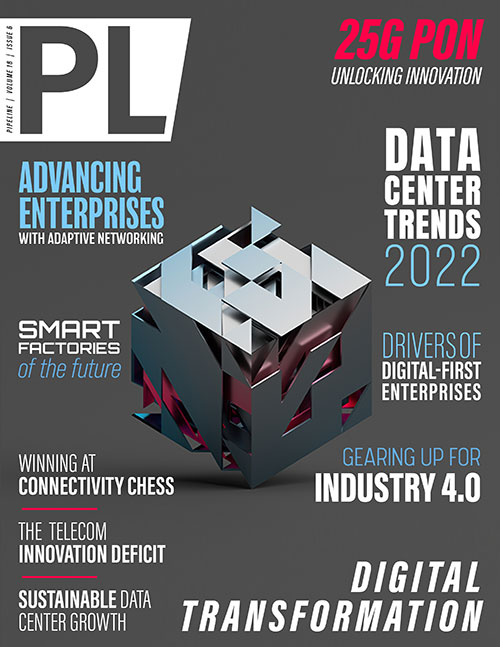Unlocking Innovation in Fiber: The Future is 25G PON
Ultimately, to achieve lower costs any technology requires volume—and volume is driven by residential broadband. By leveraging the current ecosystems of data center components and 10G components, 25G PON has a clear path to recognizing the right cost and performance profile for the next fiber access upgrade cycle beyond 10G XGS-PON. To date, cumulatively over 60 million GPON OLT ports have been shipped around the world as shown below in Figure 1.
XGS-PON remains the first choice today for newly built future-proof fiber networks. However, in the coming years as service providers look to refresh their service offering with higher capacity, the industry will see 25G as the preferred upgrade path from GPON. This upgrade path can be done by simply upgrading individual devices at specific endpoints that require the increased capacity. It may not necessarily be driven by one killer application that requires 25Gb connectivity, but instead from the need to support a higher aggregate amount of bandwidth on the access network. As an example, an operator utilizing 25G PON and statistical multiplexing can offer multiple 10Gb services without having to re-architect the existing network or disturb the existing outside plant to introduce additional splitters or filters into the network.

Figure 1: Cumulative GPON OLT Port Shipments. Source: Omdia
Summary
Fiber will continue to hold a predominant role in communications technology moving forward. The deliberately iterative and backwards-compatible nature of PON technology is key to its success. Each generation of PON—from GPON to XGS-PON and now to 25G PON—builds upon the previous generation, allowing broadband service providers to easily and iteratively upgrade their network capacity using their existing fiber infrastructure, while keeping their broadband access costs down. This PON coexistence is critical to service providers, allowing them to leverage the billion or so ONTs already deployed and to upgrade when these new services and bandwidth demands justify the investment.
Broadband service providers will benefit from the technological, operational, and service innovations that come with 25G PON. They have a proven technology solution that builds upon their existing infrastructure. They can take advantage of operational efficiencies that allow them to use the same fiber network for their residential and commercial customers. And they have a fixed network with massive capacity and low latency that can support the latest applications in Industry 4.0, business-class applications, 5G transport and 5G mobile densification.
25G PON offers service providers a cost-efficient, low-risk, high-confidence progression for their network. It delivers the right innovations at the right time—for years to come.


















